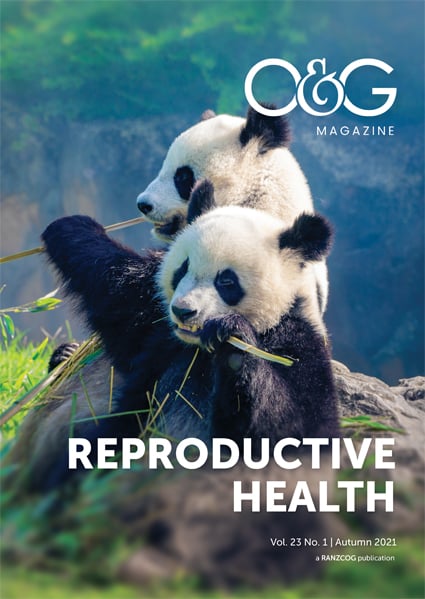Infertility is a common condition with approximately one in six couples experiencing difficulties while trying to conceive. In Vitro Fertilisation (IVF) is a highly successful treatment option for infertility with an overall live birth rate (LBR) per embryo transfer of 27.3%.1 Increasingly, with low cost IVF clinics becoming more prevalent, IVF is commonly used as primary treatment option; however, this is not without risk. While IVF is an appropriate first line option for patients affected by tubal, unexplained and male factor infertility, there are numerous alternative treatment options available. These include lifestyle modification, ovulation tracking (OT), luteal phase support, intrauterine insemination (IUI) and ovulation induction (OI), all of which are less invasive, less expensive and offer good rates of success.
IVF indications
IVF is indicated as a first-line option for unexplained infertility, tubal factor infertility, severe male factor infertility and for those making use of preimplantation genetic diagnosis (PGD) It is also useful as a second-line treatment for patients who have failed less invasive options. IVF is used in surrogacy (uterine factor) or with donor oocytes or embryos for patients with premature ovarian insufficiency. It is also reasonable to consider IVF as a first-line treatment for patients of advanced maternal age where fertility preservation is desired.2
Indications for fertility treatments other than IVF
For patients without absolute indications for IVF, it is best practice to offer less invasive treatment options first. Causes of subfertility that can be considered for treatment other than IVF include:
- Unexplained infertility
- Ovulatory disorders
- Social infertility
- Geographical separation (eg. Fly-in-fly-out workers)
- Single individuals (donor sperm)
- Same sex female couples (donor sperm)
- Mechanical infertility
- Vaginismus
- Erection or ejaculatory disorders
- Luteal phase deficiency
Normal fertility
A couple of reproductive age has a fecundity of 20–25% per cycle. Approximately 85% of these couples will conceive within 12 months and this increases to 93% after 24 months.3 Fecundity decreases with time and increasing maternal age.4 Success rates for non-IVF treatments are limited by the expected fecundity of a fertile couple. Care should therefore be individualised taking into account maternal age, duration of infertility and previous treatments. An individual’s indications for progression to IVF needs to be discussed prior to the commencement of non-IVF treatment, in the event of non-IVF treatment failure.
Treatment options
Lifestyle modifications
Lifestyle factors can negatively affect fertility, and modifying these factors can improve a couple’s chance of conception. Couples should avoid smoking, alcohol consumption and recreational drug use. Not only are these substances harmful to general health and health in pregnancy, but they also negatively affect fertility rates.5 Being underweight or obese is associated with an increased rate of infertility.6 This can be addressed with a healthy diet, regular moderate exercise and targeting a BMI of 18.5–25. Weight loss of just 10kg in an anovulatory obese patient can restore ovulation in up to 90% of patients.7 Female patients are recommended to take folic acid and iodine supplementation and to limit caffeine intake to a maximum of 200mg per day (approximately 1–2 cups of coffee per day.8
Ovulation tracking
Each month, a couple has an approximately six-day fertile window during which conception is possible. Intercourse is most likely to result in pregnancy when it occurs on the day of ovulation or up to three-days prior to ovulation.9 Cycle awareness is an important aspect of achieving a pregnancy and OT is useful for couples where the cycle length varies significantly. OT is performed as part of initial fertility workup and offers both diagnostic and therapeutic benefit. As a treatment modality, its primary aim is to detect lutenising hormone (LH) and to optimally time intercourse. For the patient, it involves serial serum hormonal monitoring beginning on day- two of the menstrual cycle. A Cochrane review demonstrated that appropriately timed intercourse improves pregnancy rates up to 14–23% per cycle.10 As OT involves only blood tests and timed intercourse, it is a low-risk first-line option for the couple presenting with infertility.
Luteal phase support
Progesterone production is critical to natural reproduction and a lack of progesterone impacts the secretory endometrium and normal embryo implantation. It can be a challenging condition to diagnose but should be suspected in a patient with a luteal phase of less than nine days or if there is a history of premenstrual spotting.11 A progesterone less than 30pmol/ml seven days following LH surge supports this diagnosis. Luteal phase support is most commonly provided with micronised vaginal progesterone commenced three to four days post LH surge at a dose of 200mg/day and continued until placental progesterone production is established at approximately 10 weeks gestation. Progesterone is generally well tolerated but can be associated with side effects such as breast tenderness, acne and mood changes.
Ovulation induction
Ovulatory disorders affect 20% of couples presenting with infertility and can be broken up into three categories:
- WHO Group 1: Hypogonadotrophic hypogonadal anovulation. Common examples include physical or emotional stress, excessive exercise or weight loss.
- WHO Group 2: Normogonadotrophic normoestrogenic anovulation, of which the most common example is Polycytic ovarian syndrome (PCOS).
- WHO Group 3: Hypergonadotrophic anovulation, which includes premature ovarian insufficiency.
OI is an effective treatment for women in both WHO group 1 and 2 and involves treatment with either oral medications (clomiphene citrate and letrozole) or injectable gonadotrophins. The treatment cycle is monitored with serial serum hormonal monitoring and transvaginal ultrasound. This is combined with recombinant HCG to trigger ovulation and is followed by timed intercourse or intrauterine insemination (IUI). Luteal phase support is offered, if required, and a pregnancy test is carried out 16 days following ovulation.
Clomiphene citrate
Clomiphene is an oral non-selective oestrogen receptor antagonist administered in the follicular phase. It is indicated for use in anovulation secondary to PCOS with a response rate of 70–80%.12 Risks of clomiphene treatment include multiple pregnancy and ovarian hyperstimulation syndrome (OHSS).13 If clomiphene is successful in inducing ovulation, it is reasonable to continue treatment for three to six cycles before moving onto alternative treatment options. Clomiphene has largely been replaced by letrozole due to antagonistic effects on both cervical mucous and endometrial receptivity secondary to its non-selective effect. Letrozole has also been demonstrated to have a higher LBR (27.5% versus 19.1%) and a reduced rate of multiple pregnancies (twin rate 3–7% versus 7–10%) when compared with clomiphene treatment.14 15
Letrozole
Letrozole is an oral aromatase inhibitor administered in the follicular phase of the menstrual cycle at a dose between 2.5–7.5mg per day. Letrozole works by inhibiting the conversion of circulating androgens to oestrogens. This reduces negative oestrogenic feedback to the pituitary gland resulting in the release of gonadotrophins and thereby inducing ovulation. Aromatase inhibitors are widely used for the treatment of postmenopausal breast cancer but have more recently been used off-label in the treatment of WHO Group 2 anovulation. They were initially used as a second-line treatment option for clomiphene resistant disease but are more commonly being prescribed first line for OI in patients with PCOS. If letrozole is successful in inducing ovulation, it is reasonable to continue treatment for three to six cycles before considering alternative treatment options.
Gonadotrophin therapy
GT is used in women with hypogonadotrophic hypogonadism and for those who demonstrate resistance to oral therapy. GT involves daily subcutaneous injection of recombinant follicle stimulating hormone (FSH) alone or in combination with recombinant LH (hypogonadotrophic hypogonadism). GT will induce ovulation in 90% of patients and will achieve a fecundity of 25% in WHO Group 1 patients and 5–15% in WHO Group 2 patients.16 Treatment with GT carries an increased risk of both multiple pregnancy and OHSS. The risk of multiple pregnancy is 15% however, this risk can be reduced with close monitoring, ultrasound to confirm unifollicular development and cycle cancellation when appropriate.17
Intrauterine insemination
IUI is an outpatient procedure which involves placing laboratory-prepared sperm directly into the uterus at the time of ovulation. It delivers significantly larger quantities of high-quality sperm to the uterus than would otherwise be achieved via intercourse. IUI is commonly utilised in donor cycles or when mechanical or social issues preclude intercourse. IUI can be used as a stand-alone procedure or combined with ovarian stimulation. Approximately 60% of couples will conceive after six cycles of IUI and the success rates are highest for the first three cycles and decline thereafter.18 The risks of the procedure itself are low, with upper genital tract infection being an uncommon potential complication. When IUI is combined with ovulation stimulation there is an increased risk of both multiple pregnancy and OHSS.
Conclusion
The non-IVF treatment options available to patients with infertility are many and while some patients will have an absolute indication for IVF, many will not. Alternative treatment options to IVF are often less invasive, less expensive and are associated with reduced risks. When suitably selected patients are offered treatment with lifestyle modification, OT, luteal phase support, IUI or OI, they have a reasonable chance of achieving a live birth while avoiding the increased risk and financial costs of IVF treatment both to the consumer and the healthcare system.
References
- Newman JE, Paul RC, Chambers GM. Assisted reproductive technology in Australia and New Zealand 2018. Sydney National Perinatal Epidemiology and Statistics Unit, the University of New South Wales. 2020.
- Goldman MB, Thornton KL, Ryley D, et al. A randomized clinical trial to determine optimal infertility treatment in older couples: The Forty and Over Treatment Trial (FORT-T). Fertil Steril. 2014;101(6);1574-81.
- Kuohung W, Hornstein M. Overview of Infertility. Up To Date, Inc. c2020. Available from: www.uptodate.com/contents/overview-of-infertility
- De Lacey S. Pre-Conception Health Special Interest Group: Age, fertility and assisted reproductive technology. The Fertility Society of Australia, 2016. Available from: www.fertilitysociety.com.au/wp-content/uploads/FSA-Age-fertility-and-reproductive-technology-2016.pdf
- Homan G. Pre-Conception Health Special Interest Group: Effects of caffeine, alcohol and smoking on fertility. The Fertility Society of Australia, 2015. Available from: www.fertilitysociety.com.au/wp-content/uploads/FSA-Effects-of-caffeine-alcohol-and-smoking-on-fertility-2016.pdf
- Pfeifer S, Butts S, Fossum G, et al. Optimising natural fertility: a committee opinion. Feril Steril. 2017;107(1):52-8.
- Pfeifer S, Fossum G, Pisarska M, et al. Obesity and reproduction: a committee opinion. Fertil Steril. 2015;104(5):1116-26.
- Homan G. Pre-Conception Health Special Interest Group: Effects of caffeine, alcohol and smoking on fertility. The Fertility Society of Australia, 2015. Available from: www.fertilitysociety.com.au/wp-content/uploads/FSA-Effects-of-caffeine-alcohol-and-smoking-on-fertility-2016.pdf
- Pfeifer S, Butts S, Fossum G, et al. Optimising natural fertility: a committee opinion. Feril Steril. 2017;107(1):52-8.
- Manders M, McLindon L, Schulze B, et al. Timed intercourse for couples trying to conceive. Cochrane Database Syst Rev. 2015;Issue 3:CD011345.
- Mesen TB, Young SL. Progesterone and the Luteal Phase: A Requisite to Reproduction. Obstet Gynecol Clin North Am. 2015;42(1):135-51.
- Taylor HS, Pal L, Sell E. Speroff’s Clinical Gynecologic Endocrinology and Infertility. 9th Ed. Philadelphia: Wolters Kluwer; 2019. p.1073-86.
- Taylor HS, Pal L, Sell E. Speroff’s Clinical Gynecologic Endocrinology and Infertility. 9th Ed. Philadelphia: Wolters Kluwer; 2019. p.1073-86.
- Taylor HS, Pal L, Sell E. Speroff’s Clinical Gynecologic Endocrinology and Infertility. 9th Ed. Philadelphia: Wolters Kluwer; 2019. p.1073-86.
- Legro R, Brzyski RG, Diamond MP. Letrozole versus Clomiphene for Infertility in the Polycystic Ovary Syndrome. N Engl J Med. 2014;371:119-29.
- Taylor HS, Pal L, Sell E. Speroff’s Clinical Gynecologic Endocrinology and Infertility. 9th Ed. Philadelphia: Wolters Kluwer; 2019. p.1073-86.
- Taylor HS, Pal L, Sell E. Speroff’s Clinical Gynecologic Endocrinology and Infertility. 9th Ed. Philadelphia: Wolters Kluwer; 2019. p.1073-86.
- Smith JF, Eisenberg ML, Millstein SG, et al. Infertility Outcomes Program Project Group. Fertility treatments and outcomes among couples seeking fertility care: data from a prospective fertility cohort in the United States. Fertil Steril. 2011;95(1):79-84.







Leave a Reply